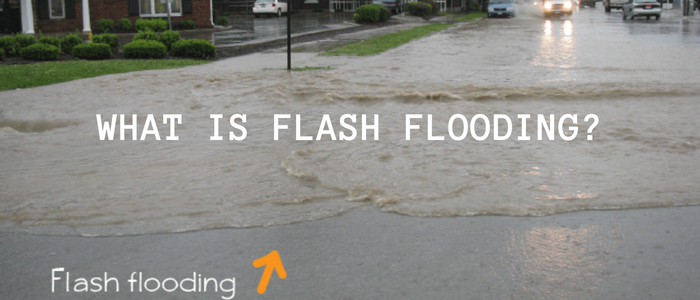What is Flash Flooding?
The term “flash flood” refers to a specific type of flooding that happens within a short period of time (typically within three to six hours) after a precipitation event. Thus, it usually happens as a result of heavy rainfall/storms or it might have been due to a break in dam. It can happen either in areas near rivers or leaks, it can also occur in areas away from water bodies.
Flash flood is considered the most dangerous type floods because they are very speedy which makes them very destructive and unpredictable and they come in surprise. People who are traveling during this event can become in a dangerous situation when they encounter fast-moving water on the road since flash flood can wash away their cars. On the other side, if people are at their homes, water can rise very quickly and trap them or at least damage their property without enough time for them to take their preventive measures. Flash floods can happen either rural or urban areas.
In Waverly, Tennessee, in August 2021, floods are shown rising quickly on a home surveillance footage.
Factors Assist in Flash Flooding
Some factors may increase the chance of flash flooding. For example, when excessive rain lands in a location with an intensity higher than the capacity of ground absorption, or if rain gets on areas that have low permeability such as concrete or asphalt that hinders the ground from water absorption. This extra water can move or can build up and rise very quickly.
Also, if there is an area that had a recent rainfall, soil becomes saturated and incapable of absorbing additional water. This can also happen for very dry soils which are difficult to absorb water too. Locations with shallow soil have a higher chance for flash flooding.
Rainfall will gravitate toward the lowest point along a potential route because water flows downward. Streets, parking lots, and basements in low-lying zones are frequent examples in urbanized settings. Creeks and rivers can become raging torrents due to flash flooding in rural locations with steep topography, such as Appalachia.
Be Aware
the optimum way to stay safe and secure you and your family is to be aware of the danger and to be ready to respond in case it happens. Know that low-lying areas have the highest risk for flooding, no matter it occurs slowly or fast.
It is also crucial for you to have up to date weather information for the area where you live. Also if you were outdoors in locations with flooded spots, for example, water-covered road, turn back and find a safer route. Do not attempt to cross through it. Flood waters are actually faster and stronger than they appear and thus more dangerous.
Role of engineers
Stormwater control systems are designed by engineers with the purpose of limiting the damages caused by rainfall.
In order to ensure the safe movement of people and goods, culverts commonly route water below roadways and trains. They also assist manage where the water flows. Detention basins and stormwater containment ponds store water for eventual discharge once flooding has subsided.
To lessen flash floods, several municipalities are also utilizing green infrastructure techniques including rain gardens, green roofs, and permeable pavement. Flooding can also be reduced by restoring wetlands near rivers and streams.
When engineering these features, we frequently base our design guidelines and standards on historical rainfall data for the area in question. Engineers utilize such data to determine the size that could be required for a culvert, pond, or other construction. We always provide a little extra capacity to deal with really heavy floods.
However, more powerful storm events that dump considerable amounts of rain on a region in a relatively short length of time are now occurring often over many sections of the U.S. Both the recent floods in Kentucky and St. Louis were on a size that, according to statistics, should only happen in respective locations once every 1,000 years.
We anticipate that this pattern will persist as a result of climate change, necessitating a rethinking of how planners and engineers will create and maintain infrastructure in the future. However, it’s challenging to forecast how often or powerful future storm occurrences will be in a certain area. Furthermore, even though climate forecasts indicate that storm occurrences will certainly become more intense, planning and constructing for the worst-case scenario is not financially viable when there are other competing requests for money.
In order to assist cities become more resilient, engineers, hydrologists, and others are now striving to understand how to plan for the future, including modeling flood occurrences and development patterns. More recent data will be needed for this, as well as design guidelines that are more suited to the conditions we expect in the future.
Read Also:
